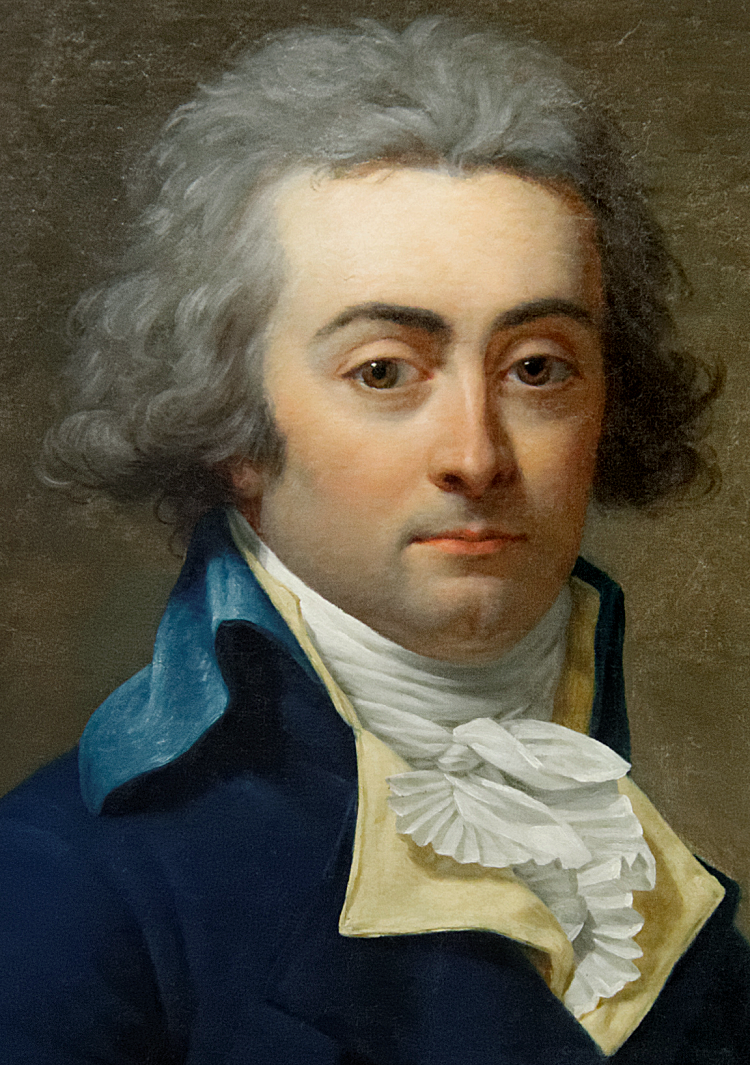 |
| Bertrand Barère de Vieuzac, circa 1793-94. |
 |
| Joseph Delaunay, 1793. |
 |
| Pierre-Charles Ruamps de Surgères, 1792. |
 |
| Jean de Bry, circa 1793. |
 |
| Marie-Jean Hérault de Séchelles, before 1794. |
 |
| Jean-Baptiste Michaud, 1792. |
 |
| Portrait of a Revolutionary, circa 1794. |
 |
| Pierre-François-Joseph Robert, circa 1793-95. |
 |
| Unknown man, attributed to Laneuville, circa 1790s. |
 |
| Jean-Baptiste Desmolin, circa 1799. |
 |
| Louis Legendre, circa 1795. |
 |
| Louis-François Bertin, circa 1795-97. |
 |
| Portrait of a Tennis Player, circa 1792. |
 |
| Jules François Paré, 1793. |
*
Jean-Louis Titon La Neuville, called Jean-Louis Laneuville (26 December 1756, Paris - 26 March 26 1826, Paris), French painter, art expert and dealer. Born the illegitimate son of Jean-Baptiste Maximilien Pierre Titon - famous as the lawyer for the queen during the trial of the "
Affaire du collier" and later a victim of "The Terror" - little is known about his early training. He studied, at least briefly, with his contemporary Jacques-Louis David - his style was sufficiently similar to that of David's, that many of his works have been wrongly attributed to the latter - and he exhibited at the
Exposition de la Jeunesse between 1783 and 1789. He started sending pictures to the
Salon after it was opened for non-academicians in 1791. During the Revolution he appears to have sought out the patronage of powerful political figures, demonstrated by the fact that eight of the twelve portraits he sent to the
Salon of 1793 were politicians, and in 1795 the numbers were four of the six. It isn't clear if he targeted these clients because of his own political enthusiasms or because he saw it as likely market. In 1791 he was elected a judge of the
Prix d'Encouragement, and in 1796 signed a petition defending the acquisition of looted artworks. He continued to receive private and official portrait commissions during the reign of Napoléon. He was also active as an expert art appraiser and possibly also as an art dealer since his estate included a large number of Old Masters and contemporary French art. Unlike David who had been exiled as a regicide in 1814, Laneuville exhibited work at the
Salon until 1817.
*
 |
| La Citoyenne Tallien à la prison de La Force, tenant ses cheveux qui viennent d'être coupés, 1796. |
Laneuville was exclusively active as a portrait painter. And while he nearly all of his portraits are of men, he was able to gain a commission from Thérésa Cabarrús, recently become madame Tallien, a beautiful and rather outrageous figure, prominent in Paris social circles following the end of the Reign of Terror. She had been imprisoned herself in the last days of the Terror as she was the mistress of Jean-Lambert Tallien, a revolutionary politician who had fallen from grace after criticizing the bloody methods of the present regime. In 1795, a year after the end of the Reign of Terror and her release from prison, she asked the artist to make a portrait of her in her cell, the depiction of which is believed to have been based on her own description. She is shown holding a lock of hair in her hand, hair that had been cut off in anticipation of her upcoming execution by the guillotine. The portrait of madame Tallien was exhibited at the Salon of 1796, where it caused a scandal; it was taken down after only a few days. It seems likely that painful memories of the Terror - certainly conjured by that cut lock of hair and all that it specifically symbolized - were still too fresh in the minds of the public. A few days before the exhibition closed, though, after the artist had made some unspecified changes, the portrait of madame Tallien was returned to the walls of the Salon.
 |
| Apparently the identity of the person depicted in the wall drawing has never been ascertained. |























No comments:
Post a Comment